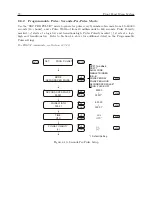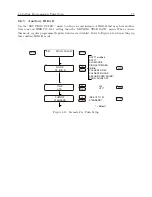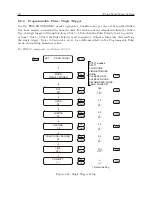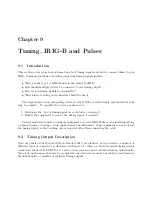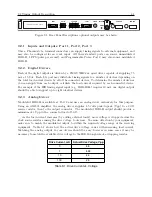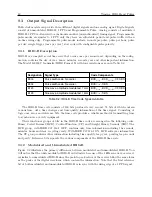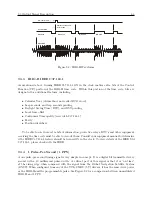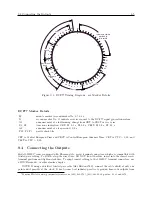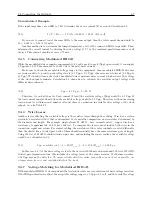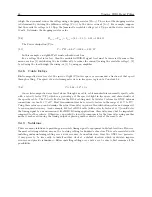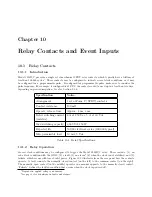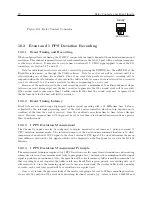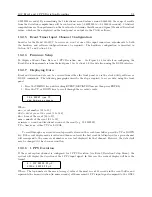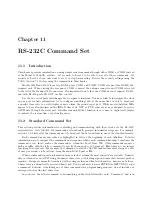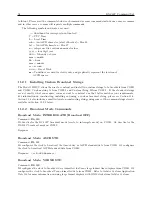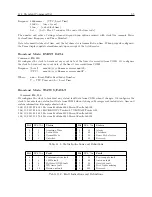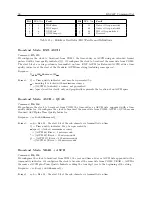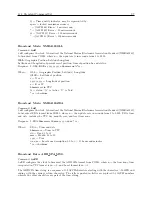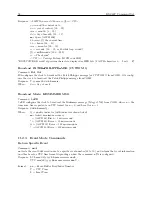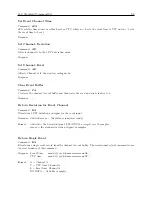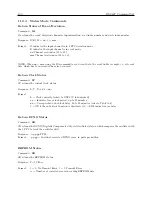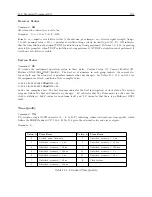
86
Timing, IRIG-B and Pulses
clocks, and use galvanic isolation of time code inputs to IEDs.
9.4.1
Attaching Cables to Screw Terminals
Prepare the twisted pair cable by stripping back at least 1/4” of the insulation and any shielding; DO NOT
tin the bare wire with solder. Tighten the screws (clockwise) down on the wire.
9.4.2
How Far Can I Run IRIG-B Cabling?
Before laying cable to transmit IRIG-B over long distances, take time to consider the following factors: (1)
resistive losses in cabling, (2) electromagnetic interference, (3) propagation delays, and (4) installation and
maintenance costs.
When a length of cable is laid from point A to point B there are two parts: one outgoing and one return.
For coaxial cable, the resistance is different for the center conductor than for the outer conductor, or shield.
For twisted pair wires, both outgoing and return wires will essentially be the same. As a simple example, to
connect an IRIG-B signal to a device 100 feet away from the clock, you must account for resistive losses in
200 feet of wire.
For details on distributing IRIG-B signals over long distances, see application note, AN101, Distributing
Timing Signals in a High EMI Environment. Download file app note101.pdf at the following link:
http://www.arbiter.com/resources/documentation.php
For important considerations about IRIG-B connections, distribution of signals and accuracy, download
the following file from the same link.
IRIG-B accuracy and connection requirements.pdf at the same link above.
9.4.3
Synchronizing Multiple IED’s From One Masterclock Output
In many installations, master clock signals are distributed from one output to multiple devices. This method
makes more efficient use of the clock synchronizing capability since the clock drivers are designed to handle
multiple loads. The exact number of possible loads must be determined from the input impedance of each
connected IED.
9.4.4
Connecting Unmodulated IRIG-B
To drive multiple loads from one unmodulated IRIG-B output, make sure that the loads are wired in parallel.
A common term for this is “Daisy Chaining”, however the idea is to drive all of these loads in parallel from
a single output. It is simple to connect loads using unmodulated IRIG-B because all of the loads are driven
at the same voltage. Connect loads to one output until reaching the driver limit (dependent on specific
output).
To determine load current imposed on one Unmodulated IRIG-B output:
1. Determine the impedance or resistance (
R
dev
) of each IED load (check device manuals).
2. Calculate the load current for each device (
I
dev
= 5
V
÷
R
dev
).
3. To get the total current, sum up all the load currents for all devices connected to the output in
question.
I
devT
=
I
dev
1
+
I
dev
2
+
. . .
+
I
devN
,
where T = Total for N devices.
2
William Dickerson, “Time in the Power Industry: How and Why We Use It,” www.arbiter.com, Resources,
Documentation
Содержание 1201B
Страница 4: ...iv ...
Страница 153: ...B 7 Four Fiber Optic Outputs 135 Figure B 4 Jumper Locations ...
Страница 155: ...B 8 8 Channel High Drive IRIG B Amplifier 137 Figure B 5 8 High Drive Outputs Jumper Locations ...
Страница 171: ...B 10 Four Additional Outputs and Dry Contacts 25 50 Vdc 153 Figure B 7 Option Connector Signal Locations ...
Страница 222: ...Appendix E Statement of Compliance The following page is a statement of compliance that includes Model 1201B and 1201C ...

